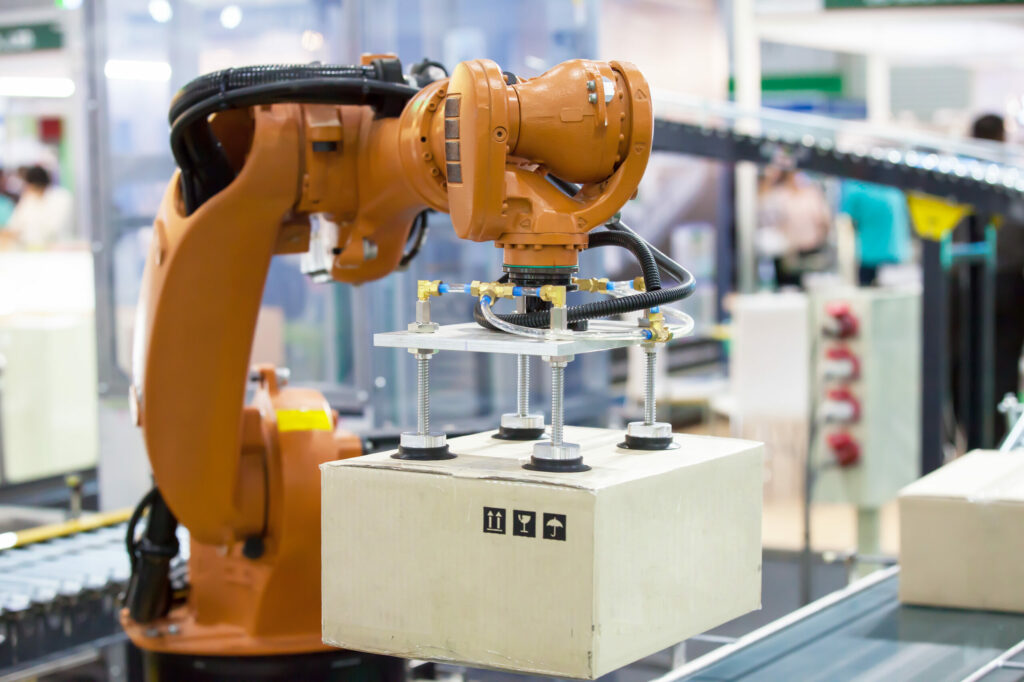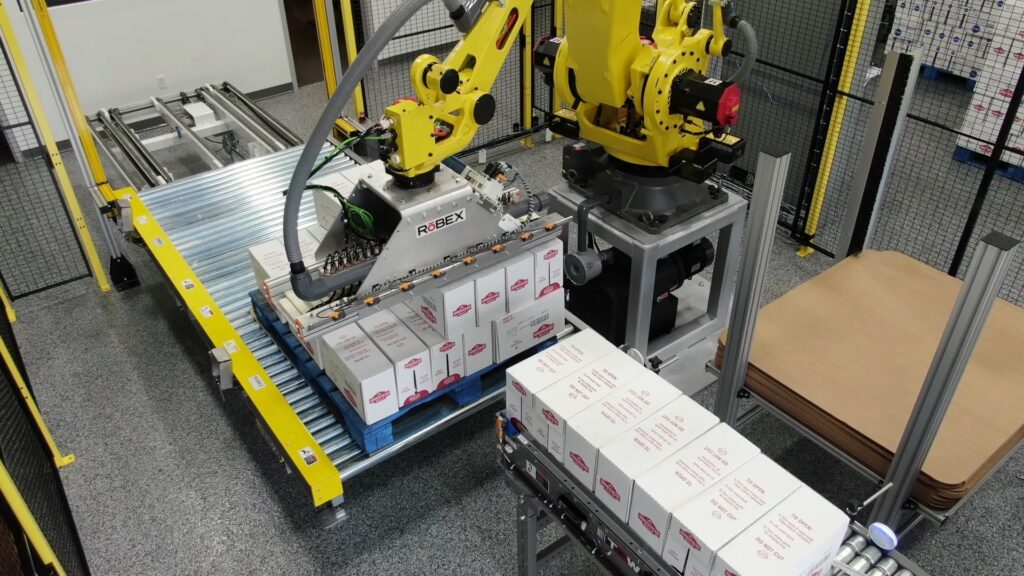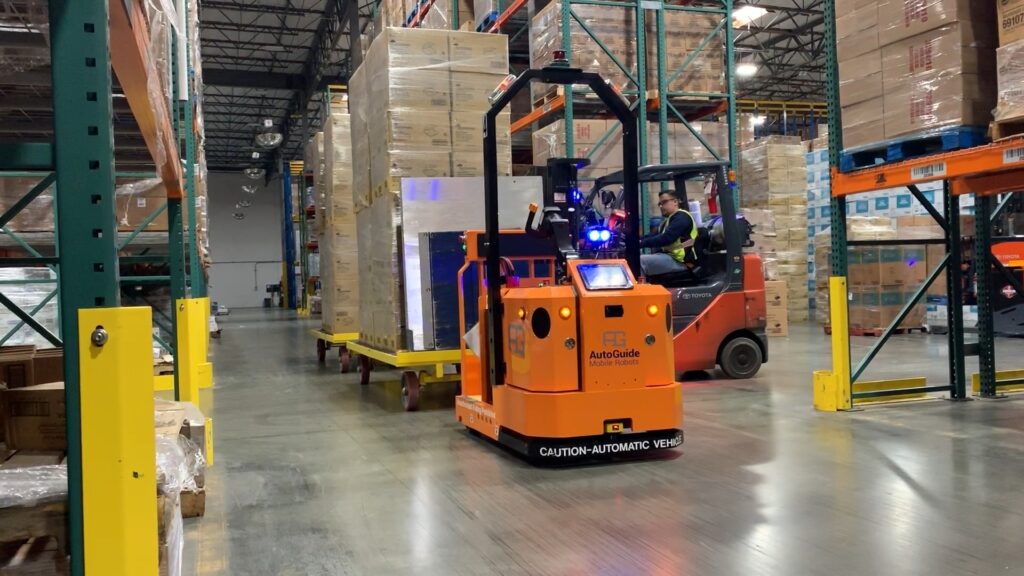Discover How Robotics and Automation in Logistics Are Helping Companies Get Ahead
Robotics in logistics is changing the way companies pack, ship, and transport. As the demand for more efficient supply chains increases, companies are increasingly turning towards a helping hand in automation–logistics robots, also called autonomous mobile robots (AMRs).
These are robots that help move goods to and from warehouse locations to reduce physical demand on humans, including repetitive tasks that can cause injury.
Logistics robots are autonomous machines that can work in any part of logistics operations, including storage, stocking, and order fulfillment. These machines are changing the way companies handle their logistics for the better.
So how do autonomous mobile robots work, what are the benefits, and what are the factors driving their growth?
How Logistics Robots Work

There are a few ways AMRs work in logistics. Since they can be part of virtually any logistics process, they are able to be used for:
- Loading and unloading goods
- Palletizing and depalletizing items
- Sorting and assembly of products
- Packing and unpacking boxes
- Monitoring inventory levels
- Tracking shipments in real-time
- Automating machine maintenance
- Delivering goods to customers
From order placement to delivery, robotics and automation in logistics are changing the way companies handle receiving, storing, transporting, and delivering goods.
Types of AMRs for Logistics
Companies interested in autonomous packing and transportation technologies aren’t limited to a specific machine. There are many different types of AMRs.
These include Automated Guided Vehicles (AGVs), which are a type of autonomous mobile robot that can specifically help with transporting and delivering goods without human intervention.
AMRs can also include automated forklifts and trucks in warehouses that can transport everything from small loads weighing a couple hundred pounds to pallets weighing 10,000 pounds.
Many of these machines can work together for a fully automated logistics solution so companies experience maximum benefits.
Factors Driving the Need for Warehouse Logistics Robots
There are a few key factors driving the growth of autonomous mobile robots in logistics.

First, many companies struggle with poor inventory management, which can ultimately cost money in lost revenue, delayed order fulfillment, and dissatisfied customers. Robots can accurately and quickly track inventory so real-time data is available at any time.
Additionally, moving items takes time and manual labor. This process creates a higher risk of accidents and errors, which translates to broken items and money lost. Companies need a way to load, unload, and move items quickly and safely, even in changing warehouse conditions.
AMRs also allow companies to put employees to work doing higher-level jobs, which can further company initiatives and growth while robots perform physically demanding or error-prone tasks.
Finally, businesses continue to struggle with labor shortages and supply chain challenges that impact their ability to deliver to customers. Robotics provides a way for companies to remain resilient in the face of these challenges while increasing their productivity, and even cutting costs.
What Are the Benefits of Adopting Robotics for Logistics?

Robots operate faster and more efficiently than humans, which translates to higher productivity, less time wasted, and more money saved. In addition, robots can work at full capacity around the clock, which dramatically boosts productivity.
These autonomous mobile robots also provide benefits such as:
- Improved safety. Since they automatically determine the most efficient route in a space and are able to reroute without manual intervention, logistics robots enhance the safety of your environment. They also prevent human workers from sustaining injuries due to heavy lifting or repetitive motion tasks.
- Reduced error. Autonomous mobile robots are able to quickly identify and move or store items, resulting in valuable time saved and reduced errors from misidentified or misplaced items, especially as warehouse environments become more complex.
- Increased speed. AMRs are able to move quickly while still prioritizing safety, which allows them to maximize speed and productivity while minimizing risk. This translates to more tasks accomplished quickly and accurately.
- Easy monitoring. It’s simple to monitor a robot’s progress, make adjustments to its configuration, and determine when maintenance is needed, which allows management to make changes as necessary or plan for downtime.
- Lower costs. Since robotics in logistics allow for enhanced productivity and lower operating costs, they ultimately save companies money over time and help them meet demand, all with improved resilience to labor shortages and supply chain challenges.
Learn What AMRs Can Do for You
As robotics continues to change our world, RōBEX is here to help you make smart decisions regarding your automation. Want to learn more about robotics logistics and what autonomous mobile robots can do for you? Visit our website to discover more AMR applications. RōBEX partners with industry leaders such as MiR and Seegrid to deliver the best to our clients.


